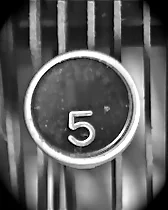5 HOT BOOKS: Comedian Robin Williams, the History of Milk, and More
/1. Robin by Dave Itzkoff (Henry Holt)
“He was more like an illusionist,” writes Itzkoff in this insightful biography of standup genius Robin Williams, “and his magic trick was making you see what he wanted you to see – the act and not the artist delivering it.” But who was he? That is the question Itzkoff, culture reporter at The New York Times, raises about Williams, who vaulted to success with the sitcom Mork & Mindy, followed by films such as Good Will Hunting, Dead Poets Society, and Mrs. Doubtfire, which called on him to bring wildly different characters to life. A comprehensive work, Robin locates Williams’ insecurities over time, yet resists psychoanalyzing the comedian and instead offers a constellation of explanations for his suicide, including addiction, depression, and the possibility of Lewy body disease and accompanying dementia.
2. Milk! A 10,000-Year Food Fracas by Mark Kurlansky (Bloomsbury)
A prolific and spirited explicator of the the world, Kurlansky has written on subjects as varied as 1968, Cuba, and European Jewry, but his sweet spot is literature on single forms of nutrition and sustenance, with books such as Cod: A Biography of the Fish that Changed the World and Salt: A World History. He now turns his attention to the mother of all subjects – milk – which he sees as the most argued-over food of the past 10,000 years. In this entertaining and constantly surprising book, he chronicles debates and disputes over milk (breast or bottle, pasteurized or homogenized, genetically modified or raw) and even finds that fierce disagreements over wet nurses involved not whether to use one, but whether brunettes or blondes were better.
3. Brothers of the Gun: A Memoir of the Syrian War by Marwan Hisham and Molly Crabapple (One World)
This extraordinary collaboration of Syrian war journalist Hisham and illustrator Crabapple (who met on Twitter) is a stunning and profound report on what it means to live in this war-ravaged country, in a constant state of conflict and torn between whether to flee or remain. “What was worth fighting for, after all?” Hisham asks, noting that a few weeks after leaving his country he felt “destined to be centerless, one lone flaming planet outside a livable orbit.” Photographs are forbidden in Syria, and Crabapple’s haunting ink drawings bring both intimacy and velocity to this powerful and original memoir that focuses on two brothers yet captures the full-scale disintegration of a country and people in the swirl of civil war.
4. The Last Cowboys: A Pioneer Family in the New West by John Branch (W.W. Norton)
The Wright family has more than a century of roots in the red dirt of rural Utah on the Smith Mesa, which Pulitzer Prize-winning reporter Branch describes as a “time capsule of stone and sand” at the intersection of the old and new West. Branch focuses on the family patriarch who, with his wife and 13 children, raises cattle in an era when the federal government owns most of the land and leases it to ranchers, while money gets scarcer. Against this backdrop, Branch, who is known for his immersive journalism, particularly involving dangerous sports such as ice hockey (Boy on Ice: The Life and Death of Derek Boogaard), gets close to the rodeo circuit, capturing its thrilling allure while also tracking head injuries and broken bones. Even as he observes the darker sides of the realm he describes, his story is one of people working hard to hold on to their place in a fast-changing world.
5. Shadow Child by Rahna Reiko Rizzuto (Grand Central)
The relationships between mixed-race, fatherless identical twin sisters and their mother provide this impressive novel with a fierce velocity. The narrative moves back and forth in an illuminating counterpoint -- between childhood and the present for the daughters, and World War II-era and the present for their mother. Rizzuto explores many aspects of her familial triad, as relationships evolve and the novel segues between a tiny, lush Hawaiian town, hard-edged downtown New York, and hellish Japanese internment camps. The sisters, deeply linked and then estranged, are vividly realized as they come to terms with their mother, the traumas of what has divided them, and a generation of mysteries.










